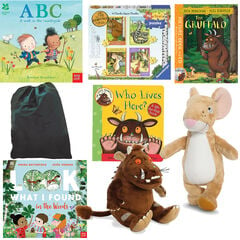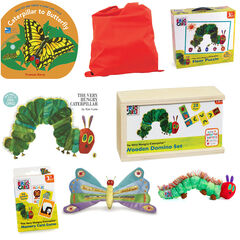Is it true that everyone is a natural storyteller?
‘This is a question I get asked a lot and the answer is always an emphatic yes!’ says Master Storyteller, Richard O’Neill.
‘I strongly believe that the world is made up of stories. You could argue that we are made up of stories. They are how we have communicated from the earliest times right up to the present. Social media, films, songs – it’s all story just in different formats.’
There have been cultures without the wheel but none without story.
Maya Angelou
Richard has been working closely with our charity Ready Generations through an intergenerational oral storytelling project called Bridging the Distance. The project has been funded and supported by Curious Minds North West, an Arts Council bridging organisation. The organisation works to champion creative arts across the North West of England, improving access to creativity and culture for all children and young people.
Richard helped us to understand that people of all ages connect their life experiences through telling stories. Stories help us all to make meaning of our world and place in it. Storytelling can be authentically described as human sense-making.

As we emerge from the pandemic, this made us think more deeply than ever about the power of oral storytelling as a strong connector and social mechanism, able to break down the boundaries that sometimes separate people at different stages of life. It can be used to bring us closer together by allowing us to be present to the words and meaning of others, even when and especially when their words and meaning might be far from our own. This is critical for the transmission of cultural values, knowledge and practices.
The importance of oral storytelling
Oral storytelling encourages the development of empathy and self-awareness as we learn to embrace the world from a range of diverse perspectives. It helps people to locate themselves within each other’s experiences, allowing them to demonstrate deeper compassion through listening and building shared stories from what is heard, felt and experienced.
Our Bridging the Distance project set out to answer two questions:
- How might oral intergenerational storytelling strengthen children and older people’s sense of agency and emotional connection?
- How could a co-construction approach to storytelling support the development of community identity and a shared sense of belonging?
Getting going!
We made a start by bringing early years educators and older people’s care practitioners together to think about how oral storytelling could provide an additional dimension to intergenerational work and allowing them to have a go at co-creating and sharing stories together.
We learned that the reluctance to use storytelling to its maximum benefit often appeared to come down to confidence. Without the comfort blanket of a picture or story book, many practitioners felt exposed and anxious about how a story may develop and move in directions they hadn’t expected. With Richard’s expert help and reassurance, participants began to practice, build and tell stories to and with each other. The stories were compelling, rich and diverse and the excitement around co-constructing stories grew and grew!
Over several weeks, intergenerational storytelling sessions took place in both early years and care home settings, culminating in a truly multigenerational family event in Liverpool.
What we found
Our findings can be broken down into four main areas:

Effective storytellers
We learned that everyone can be an effective and successful storyteller whatever their age. Young children are no exception and can be encouraged, in age appropriate ways, to use their intuitive desire to develop and share their own stories. Storytelling is a truly human endeavour that we all use, practice and perfect to make sense of everyday events and experiences. However, the most inspirational and compelling storytellers share certain characteristics.
They:
- invite everyone to be part of something, fully involved and present
- are enthusiastic using voice, eyes, facial expressions and body movements to involve everyone and show how much they want to share their story
- sprinkle stories with humour and gentle kindness to ensure everyone feels safe, comfortable and at ease
- are playful and aware that participants may lead the story into unexpected places or want to expand particular themes
- think about the core message of their story and its specific relevance for others
- think about what they want participants to learn, think about and take away
- don’t shy away from difficult subjects – struggles and conflicts often make a story feel more human and relatable
- include many forms, for example poems, chants, rhymes, jingles and songs
- use voice and gesture to add layers of meaning, mood and depth
- keep their stories simple and related to the everyday experiences and reality of participants
- use focus, skill and ingenuity to ensure everyone is included, involved and heard whatever their contribution may be
- recognise that humans are emotional creatures who experience and engage with their emotions deeply
- ensure the story has a satisfying ending that ties up loose ends and provides a satisfactory ending
Tiny heartfelt observations
The human heart, at whatever age, opens only to the heart that opens in return.
Maria Edgeworth
The best and most memorable stories involve the heartfelt interactions that evoke our emotions. We found that it was important to allow time for relationships to grow and deepen around the stories as both children and older people began to feel more comfortable together. This evoked many spontaneous interactions and sparked the intuitive, yet often overlooked, human desire and need to be reciprocal in:
- exploring and creating
- being playful and curious
- reflecting and experiencing emotions in a safe space
- being heard and feeling listened to
- being part of building something together
- sharing what is precious and creating shared memories
Such interactions not only deepened the storytelling experience but also strengthened and sustained relationships between the two groups that have continued. This focus on relational sustainability has been significant and allowed for bespoke friendships to emerge that have impacted positively for both groups.

Co-construction and identity
Like all living systems, cultures cannot remain static; they evolve or decline. They explore or expire. Buzz Aldrin
The co-construction of story was a most powerful feature of the sessions. Everyone felt equally involved, accepted and recognised for their input and participation. Although children and older people may have started with different expectations around how story is traditionally organised and performed, they soon left preconceived ideas behind to build story in the moment using everyone’s ideas. This sense of community and shared endeavour was palpable. Research supports this suggesting that when listeners are fully engaged in story their brains release a number of feel good hormones including dopamine which helps with engagement and oxytocin which plays a vital role in social bonding, empathy, trust and attachment.
Emotional connection
After nourishment, shelter and companionship, stories are the thing we need most in the world.
Philip Pullman
The action of collaborative, intergenerational storytelling involves designing, listening, telling and talking about stories and has real potential to help the emotional, social and cognitive development of children. It allows them to gain an understanding of themselves and explore this in relation to their interactions with others of all ages. For older people, it is an enjoyable thing to do, enabling them to share memories, values, cultural practices, knowledge and wisdom. This sense of purpose and meaning for both groups scaffolds the development of emotional connections and collective responsibility for a shared sense of intimacy and safety. In our project this was instrumental in developing a respectful and nurturing interdependent community with a shared identity that has continued to thrive and flourish.
Final thoughts
Sharing oral stories is the oldest and most powerful form of human communication. It has been, and continues to be, used in every culture to bring people together. From babyhood onwards, it is an engaging way to build a range of core skills that are critical to healthy living and learning throughout the life course e.g. creativity, empathy, self-awareness, moral purpose and reflection. Through imaginary worlds, children can also be supported to safely explore more complex issues like good and evil and how actions also have consequences. To achieve all these benefits we have to understand how storytelling works, not only practically but also scientifically and then how we can involve all ages with confidence, joy and dignity. Our Bridging the Distance project and Richard’s skill and commitment to intergenerational storytelling have inspired us and now there is no stopping!
Thank you very much to Richard O’Neill, Sue Egersdorff and Liz Ludden for sharing this blog with us.
Richard O’Neill is a master storytelling and internationally acclaimed children’s author and founder of the Northern Story Academy.
Sue Egersdorff is founder of the Ready Generations charity and committed to finding inspirational and innovative ways to bring generations together. She has over thirty years experience of working alongside children and families.
Liz Ludden is the owner of Dukes and Duchesses Nursery in Liverpool, a trustee of Ready Generations and the lead teacher at The Nursery in Belong, a fully integrated intergenerational nursery in Chester.











